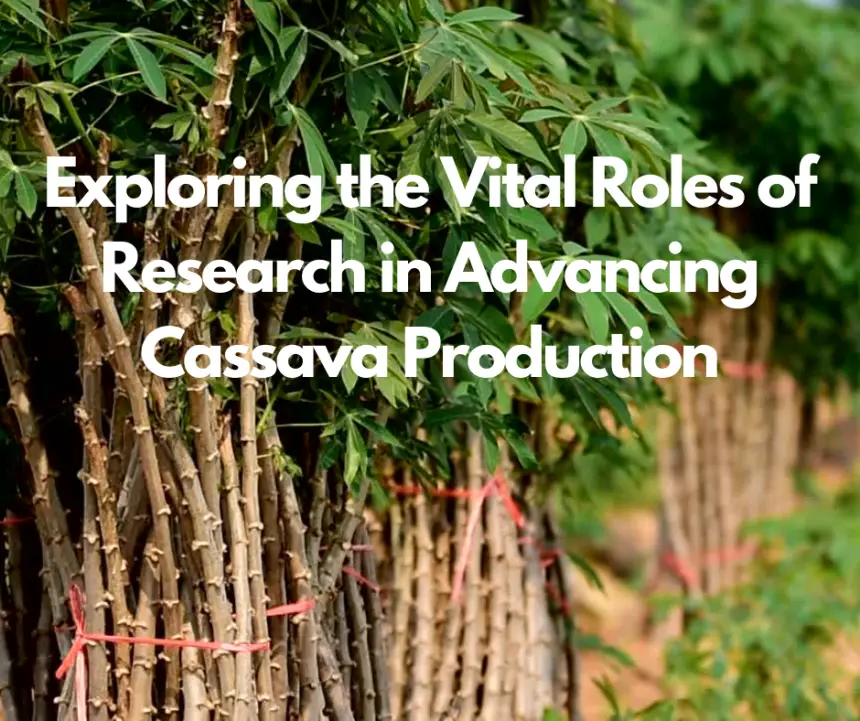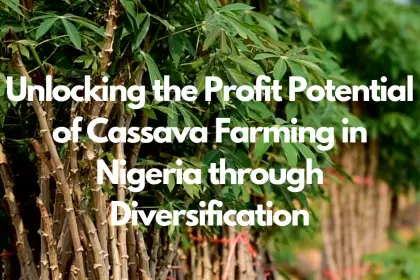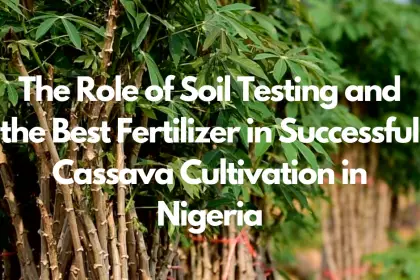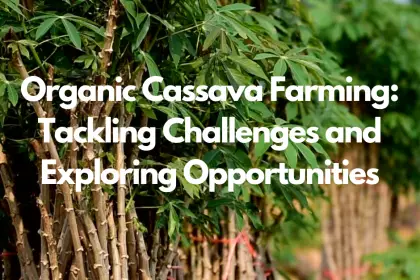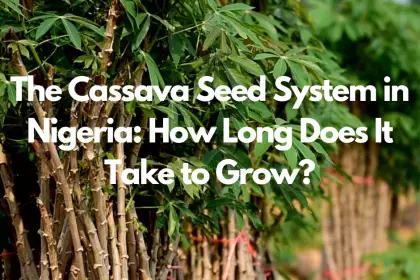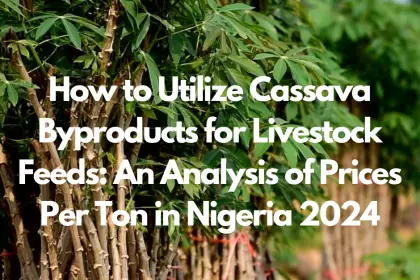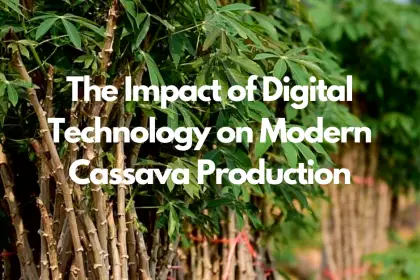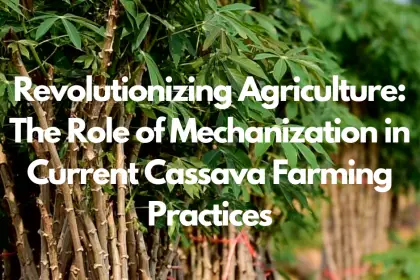Cassava, a cornerstone of food security in sub-Saharan Africa, stands as a prime candidate for enhancements in cassava production through technological innovation. As the fourth most important source of carbohydrates for human consumption in the tropics, its significance is further magnified in regions grappling with climate change, challenging soil conditions, and socio-economic hurdles. The role of research in advancing cassava farming, especially in areas like cassava farming in Nigeria, cannot be understated, given the crop’s potential to bolster food security and rural livelihoods.
Innovations in cassava breeding, pest and disease management, and biotechnological approaches to improving cassava nutrition are pivotal for enhancing yield and quality. Coupled with technological advancements in cassava processing and value addition, these efforts pave the way for sustainable cassava production practices. Emphasizing agroecological practices alongside research could significantly uplift cassava production, especially considering its resilience to climate variances and its critical role in the diets and economies of millions across Africa, Asia, and Latin America.
The Role of Research in Cassava Production
Agricultural research plays a pivotal role in enhancing cassava production, with significant contributions coming from various research institutes and universities. The National Root Crops Research Institute (NRCRI) holds the national mandate for the genetic and agronomic improvement of cassava, working in collaboration with the International Institute of Tropical Agriculture (IITA). Together, they have released 15 elite cassava varieties, boasting fresh root yield potentials of 30-35 tonnes/ha. These varieties are designed to address key challenges such as early maturation, resistance to pests like spider mites and mealybugs, and diseases including African cassava mosaic disease and cassava bacteria blight.
- Research and Development Focus Areas:
-
- Genetic Improvement: Thousands of simple sequence repeats (SSR) markers have been developed, alongside a cassava haplotype map featuring 25.9 million SNPs and 19 million indels. This genetic information aids in breeding efforts for improved varieties.
- Biotechnology: High-throughput genotyping platforms and low-cost genotyping technologies have revolutionized the breeding process, enabling the rapid identification of desirable traits.
- Disease Resistance: A major focus has been developing cassava varieties resistant to mosaic and brown streak diseases, enhancing yield and nutritional content.
- Challenges and Future Directions:
-
- Despite advancements, challenges persist, including emerging diseases and the impact of climate change on cassava production systems. Future research may focus on enhancing the nutritional profile of cassava, developing climate-resilient varieties, and exploring the crop’s potential in value-added products and bioenergy.
The collaborative efforts between international agricultural research centers, national agricultural research systems, and the private sector underscore the importance of a unified approach to cassava research and development. This synergy is crucial for the dissemination of improved cassava varieties and farming practices, ultimately contributing to increased food security and income for cassava-dependent communities.
Innovations in Cassava Breeding
Innovations in cassava breeding have been pivotal in addressing the challenges posed by climate change, pest and disease outbreaks, and the need for improved nutritional content. The integration of genomic resources and advanced breeding techniques has significantly accelerated the development of superior cassava varieties. Key innovations include:
- Genomic Resources and Molecular Markers:
-
- Thousands of simple sequence repeats (SSR) markers and a comprehensive cassava chromosome-scale reference genome.
- A haplotype map featuring 25.9 million SNPs and 19 million indels, facilitating precise genetic improvement and parental selection.
- Transgenic and Gene-Editing Technologies:
-
- The use of Agrobacterium tumefaciens and Ensifer adhaerens OV14 for efficient gene transfer.
- Development of transgenic cassava cultivars with enhanced resistance to diseases and improved nutritional profiles.
- Quantitative Trait Loci (QTL) Analysis and Genomics-Assisted Breeding:
-
- Identification of QTLs associated with resistance to major diseases like cassava mosaic disease (CMD) and cassava brown streak disease (CBSD).
- Implementation of the NextGen Cassava project, utilizing genomics-assisted breeding to rapidly develop and release new high-yielding and disease-resistant varieties.
These advancements underscore the dynamic nature of cassava breeding research, leveraging cutting-edge science to ensure the crop’s sustainability and its critical role in food security.
Advancements in Pest and Disease Management
Recent modelling studies have significantly advanced the understanding of the epidemiology of cassava pests and diseases. These studies offer crucial insights into effective surveillance and control strategies, as well as the dynamics between hosts and pests. The role of modelling in improving the detection and management of cassava pests is twofold:
- Identification of Research Gaps: Pinpointing areas where modelling can enhance understanding and management strategies.
- Climate Change Impact Analysis: Providing insights into how climate change may affect cassava pest dynamics, highlighting the need for adaptable management strategies.
Moreover, understanding the molecular mechanisms of plant defense against pests has opened new avenues for research. This knowledge is pivotal for developing more resilient cassava varieties. Key strategies currently employed in pest and disease management include:
- Cultural Practices: Implementing crop rotations and including fallow periods in agricultural schemes to naturally control pests, diseases, and weeds.
- Genetic Advancements: Identifying genes and proteins that confer resistance or tolerance to various stressors, enabling the breeding of more robust cassava varieties.
These approaches underscore the importance of integrating traditional agricultural practices with modern scientific research to enhance cassava yield and sustainability.
Improving Cassava Nutrition through Biotechnology
Biotechnological advancements have significantly contributed to improving cassava nutrition, making it a more valuable crop for both consumption and industrial purposes. One of the forefront technologies includes the use of portable devices such as the ICheckTM carotene and color instruments, which have proven instrumental in the rapid field evaluation of carotenoids content. Additionally, Near-Infrared Spectroscopy (NIRS) has shown potential in the quantification of carotenoids, cyanide potential, and prediction of starch physicochemical and functional properties.
- Soil Fertility and Cassava Response:
-
- Fertilizer application on infertile soils enhances cassava growth.
- Positive responses to Phosphorus (P) in oxisols and Nitrogen (N) in sandy soils low in organic matter.
- Continuous cultivation of cassava in the same field for more than 2-3 years shows marked improvement with Potassium (K) application.
- Genetic and Molecular Innovations:
-
- Somatic embryogenesis and friable embryogenic callus (FEC) induction are crucial for genetic transformation and genome editing.
- Development of transgenic cassava plants for accelerated cyanogen turnover during processing.
- Enhancing starch content through the molecular characterization of genes involved in starch biosynthesis.
- Genome editing techniques altering elF4E isoforms to suppress Cassava Brown Streak Disease (CBSD) symptoms and storage root necrosis.
These biotechnological strategies not only aim to improve the nutritional value of cassava but also address the challenges of pest and disease resistance, thereby contributing to the sustainability of cassava production.
Technological Innovations in Cassava Processing and Value Addition
Innovations in cassava processing and value addition have significantly improved the efficiency and sustainability of cassava production. Key technological advancements include:
- Pasting Properties Evaluation:
-
- The use of Rapid Visco Analyzer (RVA) to assess the pasting properties of cassava products, crucial for determining quality.
- Potential application of Near-Infrared Spectroscopy (NIRS) for predicting texture and pasting properties, previously demonstrated in rice and sweet potato.
- Non-Destructive Quantification:
-
- High throughput three-dimensional imaging and Ground Penetrating Radar (GPR) for in-field quantification of cassava storage roots.
- Artificial Drying Efficiency:
-
- Transition to artificial drying, which is faster than traditional sun drying, consuming 70-75% of total energy in cassava starch factories.
- Development of a numerical model for flash drying to enhance energy efficiency across different scales.
- Processing Innovations:
-
- Adoption of cassava graters for improved processing, perceived as less complex by users.
- Introduction of mobile cassava flour factories by Dadtco Philafrica, reducing post-harvest losses and greenhouse gas emissions.
- Environmental Impact:
-
- The Agro-Chain Greenhouse Gas Emissions (ACGE) Calculator for estimating GHG emissions from various processing methods.
- Mobile processing units shown to reduce losses and GHG emissions compared to large-scale central factories.
These advancements highlight the dynamic evolution of cassava processing technologies, focusing on enhancing quality, reducing energy consumption, and minimizing environmental impact.
Conclusion
Through the exploration of various advancements in cassava production, including breeding, pest and disease management, and biotechnological enhancements, we’ve underscored the intrinsic value of rigorous research in amplifying the crop’s yield, nutritional content, and overall sustainability. The collaborative initiatives between international research institutes, local agricultural bodies, and the private sector have been pivotal in driving forward these innovations. These concerted efforts have not only sought to tackle current challenges but also laid the groundwork for a future where cassava can continue to play a critical role in ensuring food security, particularly in regions vulnerable to climate adversities and socio-economic constraints.
Reflecting on the implications of these advancements, it’s evident that the path towards enhancing cassava production is marked by a blend of traditional wisdom and cutting-edge science. However, the journey doesn’t end here. The acknowledgment of current successes must go hand in hand with the recognition of the need for ongoing research to adapt to emerging threats and opportunities. Continuous innovation, grounded in an in-depth understanding of cassava’s role within global agricultural frameworks, will be essential in harnessing its full potential to meet the increasing demands of a growing population, ensuring cassava remains a beacon of hope for food security worldwide.
FAQs
Q: What methods can be employed to boost cassava crop yields?
A: To enhance cassava yields, farmers should select planting materials from cassava plants that have demonstrated high root yields. Utilizing stem cuttings from these plants as planting material can significantly improve the harvest, particularly with traditional varieties that might be more vulnerable to pests and diseases.
Q: What factors influence the production levels of cassava?
A: Cassava production can be affected by various farm-specific factors such as the size of the land, ownership of livestock, the farmer’s experience, and engagement in other agricultural activities. Additionally, access to markets plays a crucial role in determining the ability of farmers to sell their cassava produce.
Q: What is the status of cassava production in Nigeria?
A: Nigeria faces the challenge of overcoming consistently low yields of cassava. The country’s current cassava production stands at approximately 60 million tonnes from about 6.5 million hectares, resulting in an average yield of 9.1 tonnes per hectare. This is lower compared to the yields of Ghana and Indonesia, which are 20 tonnes/ha and 24 tonnes/ha respectively.
Q: What technologies are currently utilized in the production of cassava?
A: The production of cassava has been improved with the adoption of various processing technologies, including vibrating sieves, abrasive peelers, motorised graters, drum driers, and screw-jacks. These technologies facilitate the production of processed cassava products such as “gari,” “lafun,” starch, and “fufu.”

